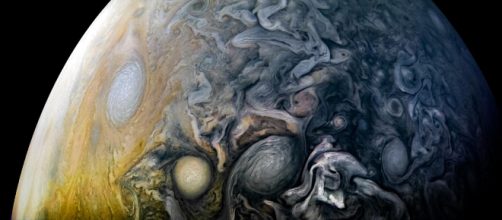Jupiter is said to be the most dominant planet in the solar system. Because of its giant size, it's considered a cornerstone of planet formation. According to NASA, Jupiter had a great influence on the formation and evolution of the other planets. For this reason, the Juno mission was created by NASA to learn its history and develop a better understanding of other planets, stars, asteroids, and comets. On August 5, 2011, the Juno spacecraft was initially blasted into space via the world's most powerful rocket, the Atlas V 551. In October 2013, the spacecraft used the Earth's gravity to push it towards Jupiter.
Juno reached Jupiter in 2016 and after delicate (and dangerous) maneuvering the spacecraft was placed in a special orbit, called polar orbit and began its mission of sending data and status reports back to earth.
New images from Jupiter
Four days ago, NASA released the latest of Juno's images, its twelfth close flyby of Jupiter in its northern hemisphere. The spectacular images show the intricate details of the cloud patterns of the planet. NASA makes available raw images taken by Juno's camera for professional/novice photographers and scientists to download and edit as they wish through their image-sharing forum.
During the flybys, Juno probes beneath Jupiter's many cloud cover and sends data back to earth about the planet's origins, weather layer and other detailed information, as well as, its gravitational and magnetic fields.
Juno’s close encounters with the planet happen every 54 days, which means photos will be sent again around May 24.
Mission to soon end
NASA notes that Jupiter receives a quarter of less sunlight and is five times further from the sun than Earth. The spacecraft Juno is the first solar-powered craft to travel so far from the sun with the biggest need for the sun in order to function properly. For this reason, the orbit and orientation of Juno, as well as, its massive structure of 66 feet in diameter and 15 feet in height, were designed so that its solar panels would face the sun throughout its mission.
Sadly, Juno’s mission is scheduled to end in July this year, but there are thoughts of extending the mission.
Many wonderful discoveries were made by Juno like its central core is immense and “fuzzy” or that its magnetic field is twice as strong than first thought. If the mission is ended, the spacecraft will be programmed to enter into Jupiter atmosphere and burn up like a meteor.


